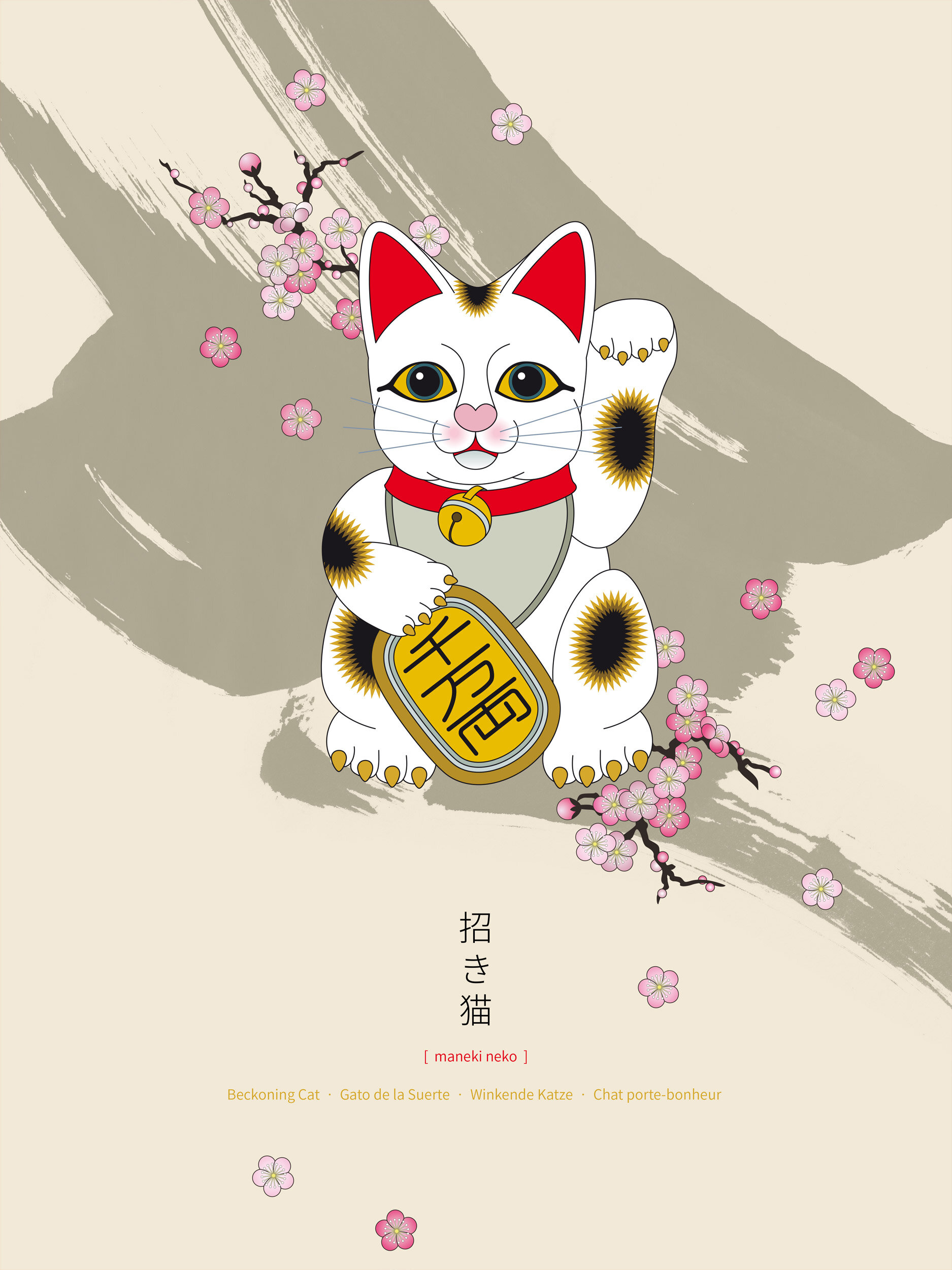World Famous Beckoning Cat
Maneki Neko is one of the most popular cats in the world and a very beloved Feng Shui symbol, but hardly anyone in the Western world knows the story behind this friendly, Japanese cat.
Maneki Neko, Art print, out of stock
Maneki Neko, Giclée Print
招額猫 — Maneki Neko
The origin of Maneki Neko lies in Japan, not in China as most Western people suppose. However it became extraordinary popular in both countries and successively conquered the world, becoming one of the best known Feng Shui symbol.
Maneki Neko literally translates with „beckoning cat“ but is also known under “welcoming cat”, “lucky cat” or “money cat”. The cat usually wears a red ribbon with bell around its neck and holds a Japanese coin with the inscription: 千万両, meaning “ten million ryō” (an extraordinary sum of money).
The Maneki Neko figurine is traditionally made of porcelain or ceramics and comes in many different colors, shapes and sizes. The most common color is white with black-brown spots, looking very much like a Japanese Bobtail breed. The beckoning cat is often placed in restaurants and shop windows. Raising the left paw brings in customers, while a right paw brings good luck and wealth – sometimes you even see cats with both paws high in the air …
The Cat’s Tale
There are many different legends about the origin of the beckoning cat. In the most known story a wealthy feudal lord was taking shelter under a tree near Gōtoku-ji temple during a thunderstorm. He saw a temple priest’s cat beckoning to him and followed; a moment later the tree was struck by lightning. The wealthy man became friends with the poor priest and the temple became prosperous. When the cat died, supposedly the first Maneki Neko was made in tis honor and became a luck symbol.
Another famous story goes like this: The operator of an impoverished shop takes in a starving, stray cat despite barely having enough to feed himself. In gratitude, the cat sits in the front of the store beckoning customers, thus bringing prosperity as a reward to the charitable proprietor. Ever after, the ‘beckoning cat’ has been a symbol of good luck for small business owners.
Beckoning For You
It makes no difference, whether you use a real Maneki figurine or a picture – the symbol counts, not the form. Best place to put it is the entrance area of your flat or in the shop-window if you run your own shop.


